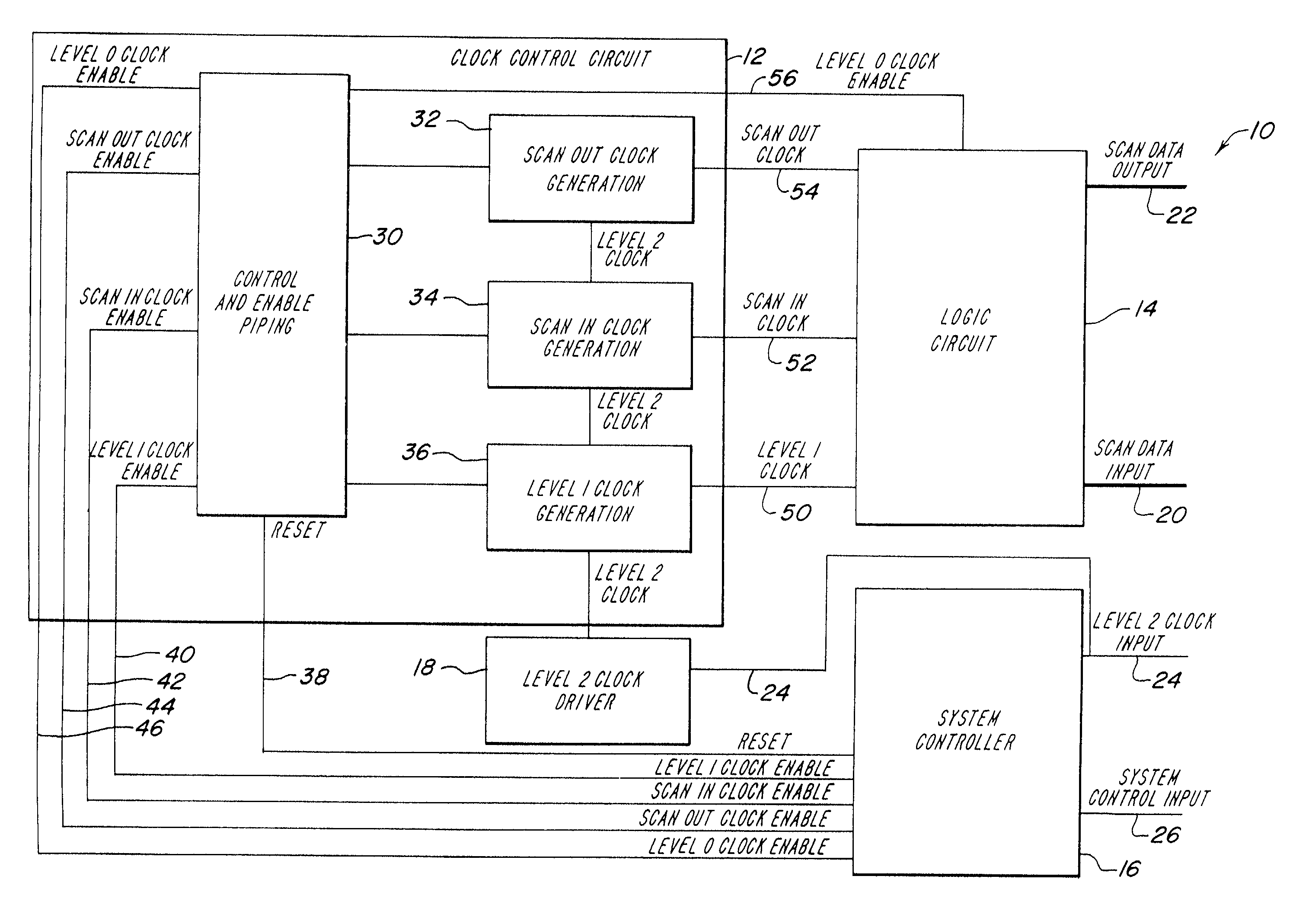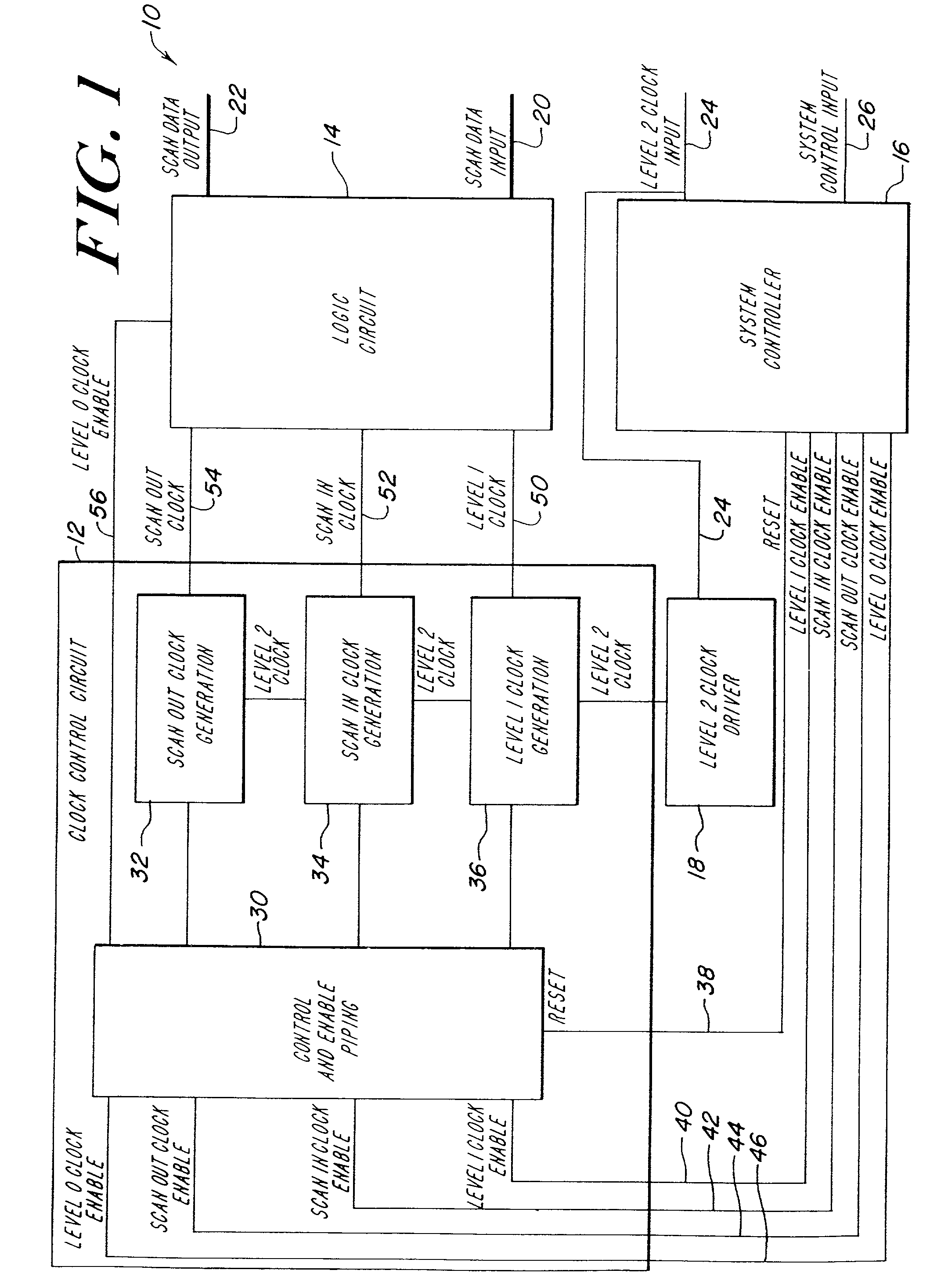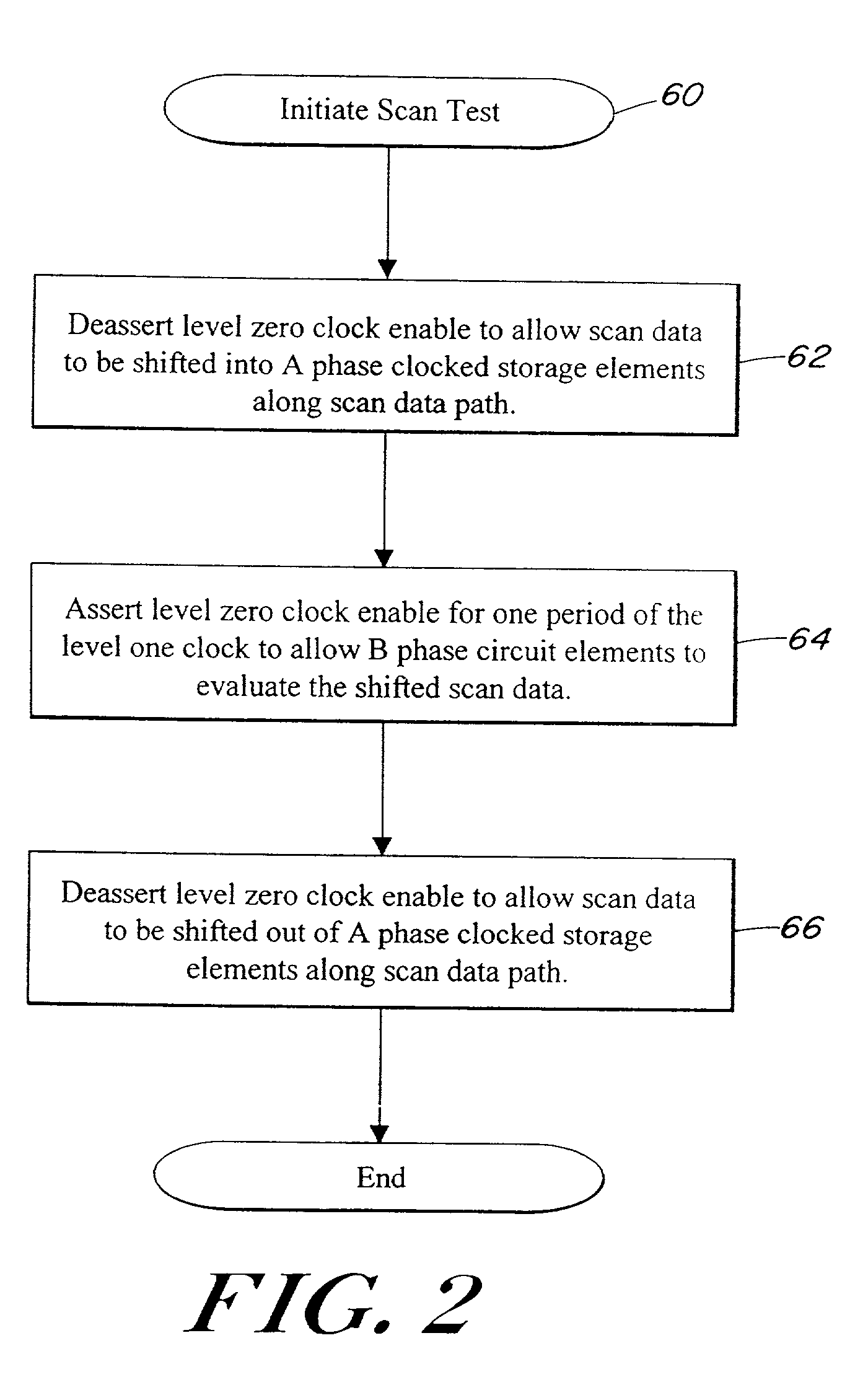Method for scan testing and clocking dynamic domino circuits in VLSI systems using level sensitive latches and edge triggered flip flops
a dynamic domino circuit and scan testing technology, applied in the direction of generating/distributing signals, digital transmission, instruments, etc., can solve the problems of no longer realizing the common performance drawbacks of conventional scan testing of clocked storage elements, and achieve the effect of ensuring the speed and efficiency of data storag
- Summary
- Abstract
- Description
- Claims
- Application Information
AI Technical Summary
Benefits of technology
Problems solved by technology
Method used
Image
Examples
Embodiment Construction
[0028]The illustrative embodiment of the present invention provides a system for performing scan control and observation on any type of clocked storage element without halting the system clock. In the illustrative embodiment, the clock control circuit is adapted to generate the clocks necessary to shift scan data into and out of a scannable logic element and to generate the clock necessary for the scannable logic element to properly operate. Each clock generator of the clock control circuit is coupled to a system controller that provides the control signals to initiate and halt generation of the various clocks. In addition, each clock generator is coupled to the system clock to synchronize clock generation in each clock generator. Hereinafter, the system clock is referred to as the level 2 clock. Nevertheless, those skilled in the art will appreciate that the level 2 clock is a low skew single wire two phase clock distributed throughout the system of the illustrative embodiment of t...
PUM
 Login to View More
Login to View More Abstract
Description
Claims
Application Information
 Login to View More
Login to View More - R&D
- Intellectual Property
- Life Sciences
- Materials
- Tech Scout
- Unparalleled Data Quality
- Higher Quality Content
- 60% Fewer Hallucinations
Browse by: Latest US Patents, China's latest patents, Technical Efficacy Thesaurus, Application Domain, Technology Topic, Popular Technical Reports.
© 2025 PatSnap. All rights reserved.Legal|Privacy policy|Modern Slavery Act Transparency Statement|Sitemap|About US| Contact US: help@patsnap.com



